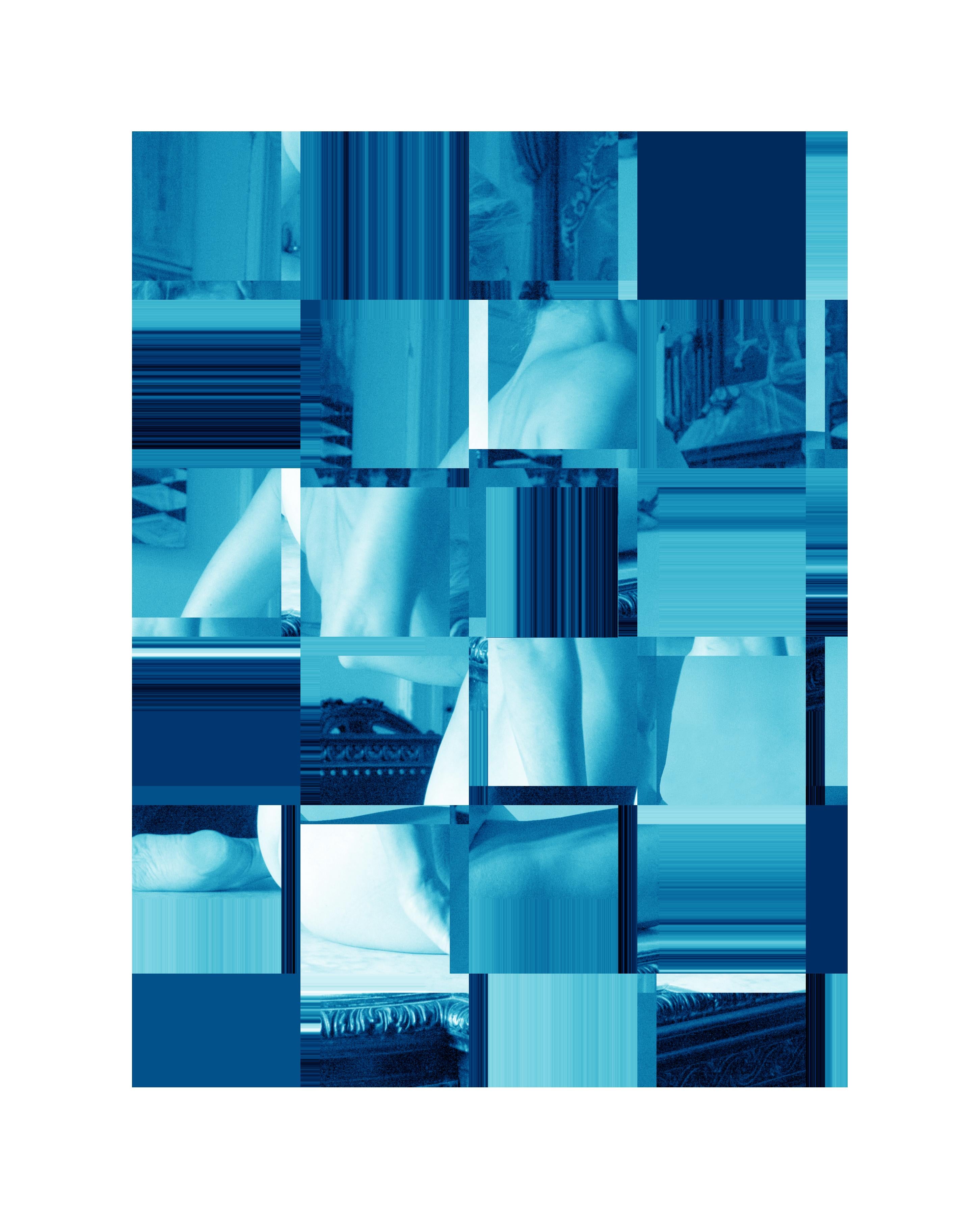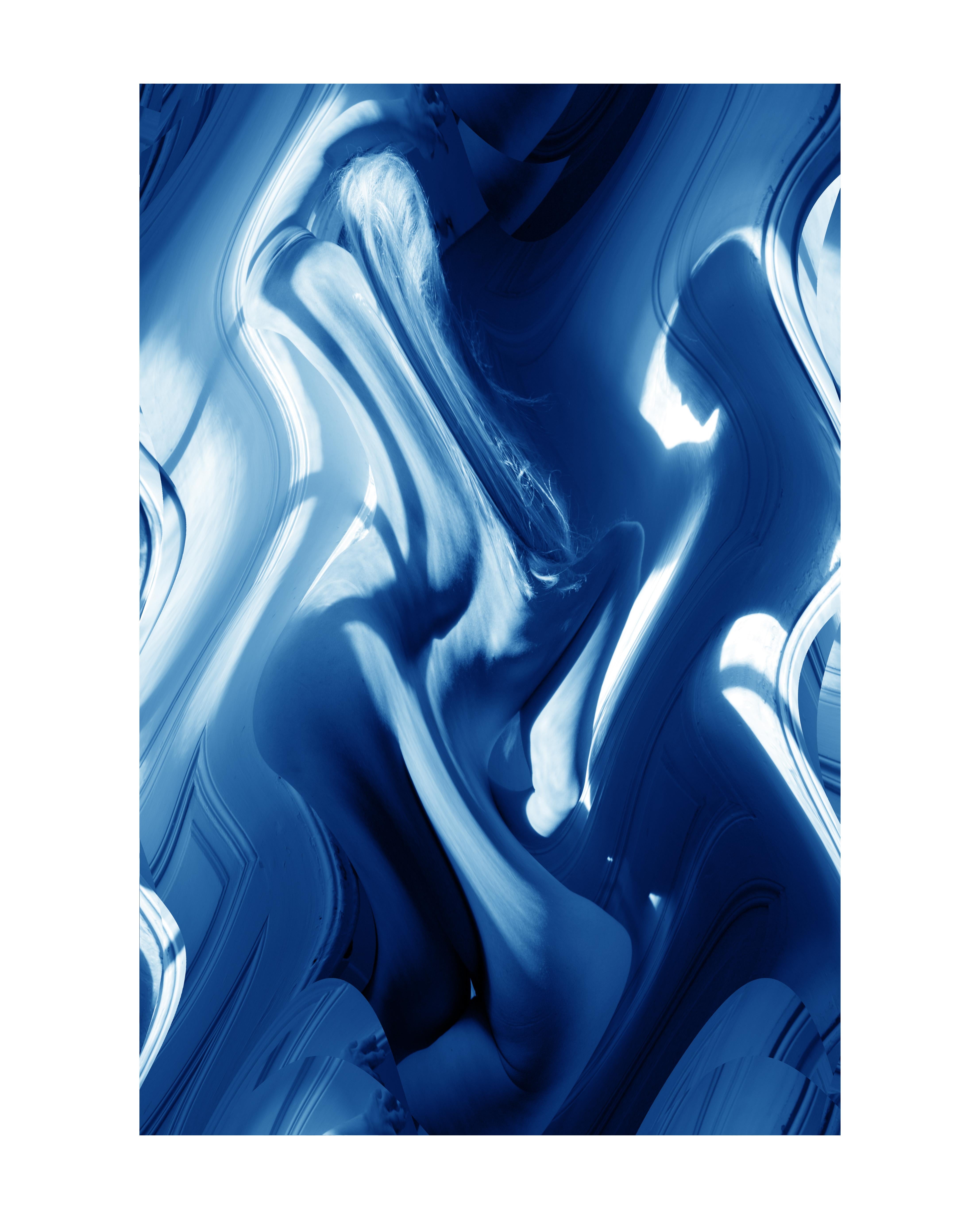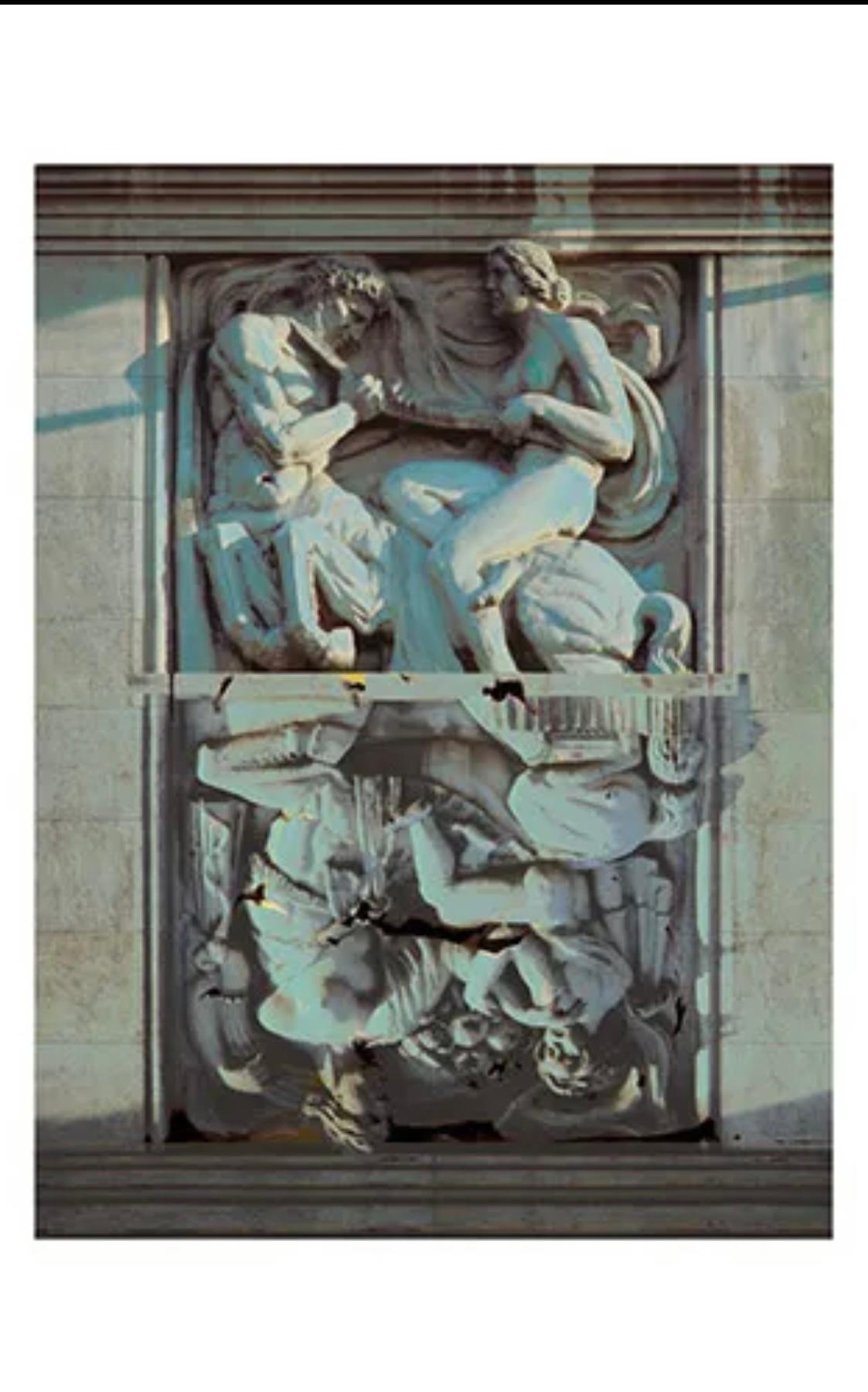Salvador Dalí"Mais O Belle Dionee" from the suite "lArt d'Aimer d'Ovide"1976
1976
About the Item
- Creator:Salvador Dalí (1904 - 1989, Spanish)
- Creation Year:1976
- Dimensions:Height: 31.75 in (80.65 cm)Width: 24.5 in (62.23 cm)Depth: 1 in (2.54 cm)
- Medium:
- Movement & Style:
- Period:
- Condition:
- Gallery Location:San Francisco, CA
- Reference Number:
Salvador Dalí
Instantly recognizable by his waxed, upturned mustache, the flamboyant Salvador Dalí is one of modern art’s most distinctive figures. He is also one of the icons of the 20-century avant-garde Surrealist movement, whose dreamlike images, drawn from the depths of the unconscious, he deployed in paintings, sculptures, prints and fashion, as well as in film collaborations with Luis Buñuel and Alfred Hitchcock.
Dalí was born in Figueres, Catalonia, and even as a youngster, displayed the sensitivity, sharp perception and vivid imagination that would later define his artworks. In these, he conjured childhood memories and employed religious symbols and Freudian imagery like staircases, keys and dripping candles to create unexpected, often shocking pieces.
Dalí's use of hyperrealism in conveying Surrealist symbols and concepts that subvert accepted notions of reality is epitomized in what is perhaps his most recognizable painting, The Persistence of Memory (1931), in which he depicts the fluidity of time through melting clocks, their forms inspired by Camembert cheese melting in the sun. His artistic genius, eccentric personality and eternal quest for fame made him a global celebrity.
“Each morning when I awake, I experience again a supreme pleasure,” he once said. “That of being Salvador Dalí.”
Find original Salvador Dalí paintings, prints, sculptures and other works on 1stDibs.
- ShippingRetrieving quote...Ships From: San Francisco, CA
- Return PolicyA return for this item may be initiated within 7 days of delivery.
- "Phobeus , ce Dieu Couronne de Lauriers" from the suite "l'Art d'Aime d'Ovide"By Salvador DalíLocated in San Francisco, CAThis artwork titled, "Phobeus, ce Dieu Couronne de Lauriers" from the suite, "l'Art d'Aimer d'Ovide" 1976. is an original wood engraving on Japan nacre paper by artist Salvador Dal...Category
Late 20th Century Surrealist Nude Prints
MaterialsWoodcut
- Une Jeune Femme Presente Avec Grace, from Les Enfants TrouvesBy (after) René MagritteLocated in San Francisco, CAThis artwork titled "" Une Jeune Femme Presente Avec Grace" from the suite" Les Enfants Trouves created in 1953 and printed/published in 1968 in an...Category
Mid-20th Century Surrealist Nude Prints
MaterialsLithograph
- Femmes en Costumes IIBy Leonor FiniLocated in San Francisco, CAArtist: Leonor Fini Title: Femmes en Costumes Year: c.1970 Medium: Original color engraving Edition: Inscribed E.A (Epreuve d'Artiste, Artist Proof) in pencil Paper: Arches paper Ima...Category
1970s Surrealist Nude Prints
MaterialsEngraving
- Femmes en CostumesBy Leonor FiniLocated in San Francisco, CAArtist: Leonor Fini Title: Femmes en Costumes Year: c.1970 Medium: Original color engraving Edition: Numbered 124/275 in pencil Paper: Arches paper Image size 14.5 x 11 inches Sheet ...Category
1970s Surrealist Nude Prints
MaterialsEngraving
- TahitiBy Wolfgang WolffLocated in San Francisco, CAThis artwork titled "Tahiti" 1941 Is a original woodcut by noted French/German artist Wolfgang Wolff, 1909-1994. It is hand signed in pencil by the artist at the lower right corner, ...Category
Mid-20th Century Realist Figurative Prints
MaterialsWoodcut
- La Negra (The Black Woman)By Rufino TamayoLocated in San Francisco, CAThis artwork titled "La Negra (The Black Woman)" from the suite "The Mujeres File" 1969 is an original colors lithograph on B.F.K. Rives paper by renown Mexican artist Rufino Tamayo, 1899-1991. It is hand signed and numbered 150/150 in pencil by the artist. The image size is 26.85 x 21.25 inches, sheet size is 29.5 x 22.15 inches, framed size is 42 x 35 inches. Published by Touchtone Publisher, New York, printed by Ateliers Desjobert, Paris. Referenced and pictured in the artist's catalogue raisonne by Pereda, plate #109 page 107. Custom framed in a wooden silver frame, with silver spacer and fabric matting. It is in excellent condition. About the artist: A native of Oaxaca in Southern Mexico, Rufino Tamayo's father was a shoemaker, and his mother a seamstress. Some accounts state that he was descended from Zapotec Indians, but he was actually 'mestizo' - of mixed indigenous/European ancestry. (Santa Barbara Museum of Art). He began painting at age 11. Orphaned at the age of 12, Tamayo moved to Mexico City, where he was raised by his maternal aunt who owned a wholesale fruit business. In 1917, he entered the San Carlos Academy of Fine Arts, but left soon after to pursue independent study. Four years later, Tamayo was appointed the head designer of the department of ethnographic drawings at the National Museum of Archaeology in Mexico City. There he was surrounded by pre-Colombian objects, an aesthetic inspiration that would play a pivotal role in his life. In his own work, Tamayo integrated the forms and tones of pre-Columbian ceramics into his early still lives and portraits of Mexican men and women. In the early 1920s he also taught art classes in Mexico City's public schools. Despite his involvement in Mexican history, he did not subscribe to the idea of art as nationalistic propaganda. Modern Mexican art at that time was dominated by 'The Three Great Ones' : Diego Rivera, Jose Clemente Orozco, and David Alfaro Siqueros, but Tamayo began to be noted as someone 'new' and different' for his blending of the aesthetics of post Revolutionary Mexico with the vanguard artists of Europe and the United States. After the Mexican Revolution, he focused on creating his own identity in his work, expressing what he thought was the traditional Mexico, and refusing to follow the political trends of his contemporary artists. This caused some to see him as a 'traitor' to the political cause, and he felt it difficult to freely express himself in his art. As a result, he decided to leave Mexico in 1926 and move to New York, along with his friend, the composer Carlos Chavez. The first exhibition of Tamayo's work in the United States was held at the Weyhe Gallery, New York, in that same year. The show was successful, and Tamayo was praised for his 'authentic' status as a Mexican of 'indigenous heritage', and for his internationally appealing Modernist aesthetic. (Santa Barbara Museum of Art). Throughout the late thirties and early forties New York's Valentine Gallery gave him shows. For nine years, beginning in 1938, he taught at the Dalton School in New York. In 1929, some health problems led him to return to Mexico for treatment. While there he took a series of teaching jobs. During this period he became romantically involved with the artist Maria Izquierdo...Category
Mid-20th Century Modern Figurative Prints
MaterialsLithograph
- PICTOPOETRY 4 signed #20/20 by Paula Craioveanu Photograph 20x16in in mat 28x20iBy Paula CraioveanuLocated in Forest Hills, NYSurreal Nude, part of my "Pictopoetry" series. Printed on Hahnemuhle art photo paper with white borders, overall size 20x16in. This particular one is signed and numbered 20 of 20 (e...Category
2010s Surrealist Nude Prints
MaterialsPhotographic Paper
- UNDER THE SKIN 3 signed #20/20 by Paula Craioveanu Surreal Nude PhotographyBy Paula CraioveanuLocated in Forest Hills, NYUnder the Skin #3 Surreal Nude, part of my "Under the Skin" series. Printed on Hahnemuhle art photo paper with white borders, size is 12.5x12.5in. This particular one is signed and...Category
2010s Surrealist Nude Prints
MaterialsPhotographic Paper
- Under the Skin 5 signed #2/20 Paula Craioveanu Photograph 20x16in in mat 28x20inBy Paula CraioveanuLocated in Forest Hills, NYUNDER THE SKIN 5 Surreal Nude, part of my "Under the Skin" series. Printed on Hahnemuhle art photo paper with white borders, size is 20x16in. In mat overall size 28x20in. This par...Category
2010s Surrealist Nude Prints
MaterialsPhotographic Paper
- Guardian signed #2/20 Paula Craioveanu Photograph 20x16in in mat 28x20inBy Paula CraioveanuLocated in Forest Hills, NYUNDER THE SKIN 5 Surreal Nude, part of my "Under the Skin" series. Printed on Hahnemuhle art photo paper with white borders, size is 20x16in. In mat overall size 28x20in. This par...Category
2010s Surrealist Nude Prints
MaterialsPhotographic Paper
- Centaurs signed #2/20 Paula Craioveanu Photograph 20x16in in mat 28x20inBy Paula CraioveanuLocated in Forest Hills, NYUNDER THE SKIN 5 Surreal Nude, part of my "Under the Skin" series. Printed on Hahnemuhle art photo paper with white borders, size is 20x16in. In mat overall size 28x20in. This par...Category
2010s Surrealist Nude Prints
MaterialsPhotographic Paper
- Guardians signed #2/20 Paula Craioveanu Photograph 20x16in in mat 28x20inBy Paula CraioveanuLocated in Forest Hills, NYUNDER THE SKIN 5 Surreal Nude, part of my "Under the Skin" series. Printed on Hahnemuhle art photo paper with white borders, size is 20x16in. In mat overall size 28x20in. This par...Category
2010s Surrealist Nude Prints
MaterialsPhotographic Paper





